
Deadly Beauty: Satellite Reveals Stunning Yet Toxic Algal Blooms Visible from Space
Algal blooms paint breathtaking scenes across our waters, but these vibrant displays often mask a troubling ecological imbalance. Their severity can be so extreme that they are visible from outer space. This stunning yet toxic transformation of our water bodies, captured in high-resolution by satellite imagery, underscores the urgent need for effective management strategies.
LG Sonic strategically utilizes satellite imagery to enhance our understanding and management of algal blooms across the globe. To demonstrate the widespread nature of algal blooms and the critical role of satellite technology in our innovative approach to water management, we will be presenting a series of images from NASA’s Earth Observatory.
The Deadly Nature of Algal Blooms
As algae gather on the water’s surface, they reduce the oxygen levels in the water below, which can suffocate aquatic life that needs oxygen to survive. These oxygen-depleted areas, often lifeless, are known as “dead zones”.
Beyond creating dead zones, algal blooms can be harmful due to the production of toxins, posing serious risks to aquatic life and human health while also threatening entire ecosystems and affecting biodiversity.
Breathtaking but Worrying Satellite Images: Combating Algal Blooms
LG Sonic employs satellite imagery to enhance our algal bloom management strategies. This valuable data allows us to detect and monitor algal proliferation with unprecedented accuracy. By integrating these images into our solutions, we can deploy our ultrasonic technology precisely where it is needed most, ensuring timely, efficient, and effective treatment.
Below, a series of stunning images from NASA’s Earth Observatory illustrate the scope and severity of this environmental issue. Algal blooms, while mesmerizing in their vivid colors and sweeping coverage, signal a critical call to action for preserving our planet’s aquatic health.
Deep Green Waters: Algal Blooms in the Gulf of Oman
The Gulf of Oman recently experienced significant algal activity, with its waters often turning a deep green due to the dense concentration of chlorophyll. This region is particularly sensitive to the dual impacts of natural nutrient influx and human-induced pollution, which can exacerbate the intensity of these blooms.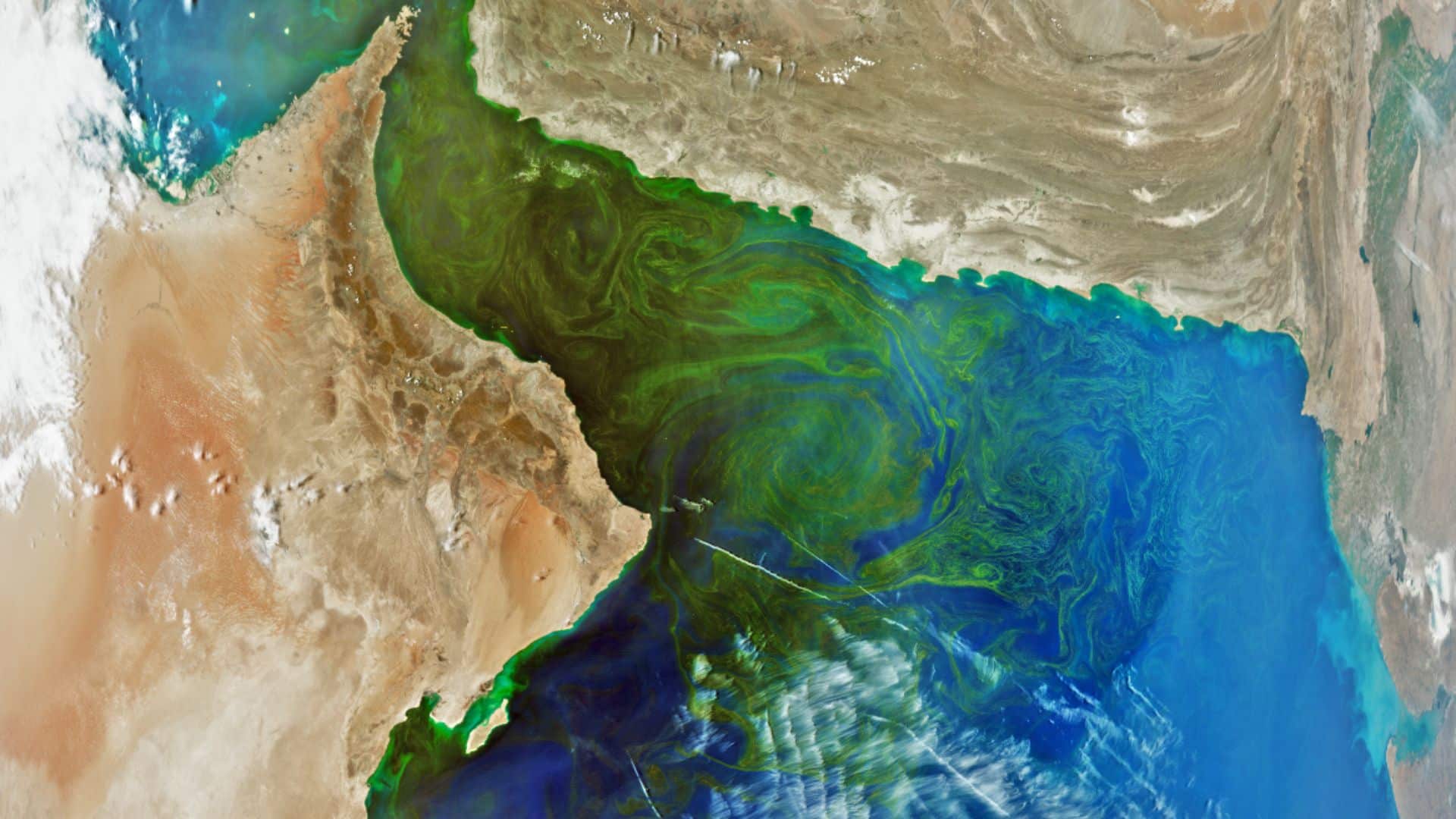
Complex Beauty in the Gulf of Oman – Image Credit: NASA
The Algal Veil over Clear Lake
At Clear Lake, the surface often becomes heavily clouded by algae, transforming the lake into a striking display of environmental imbalance. This accumulation of algae, largely driven by nutrient-rich runoff, not only disrupts the lake’s aesthetic beauty but also poses severe ecological risks.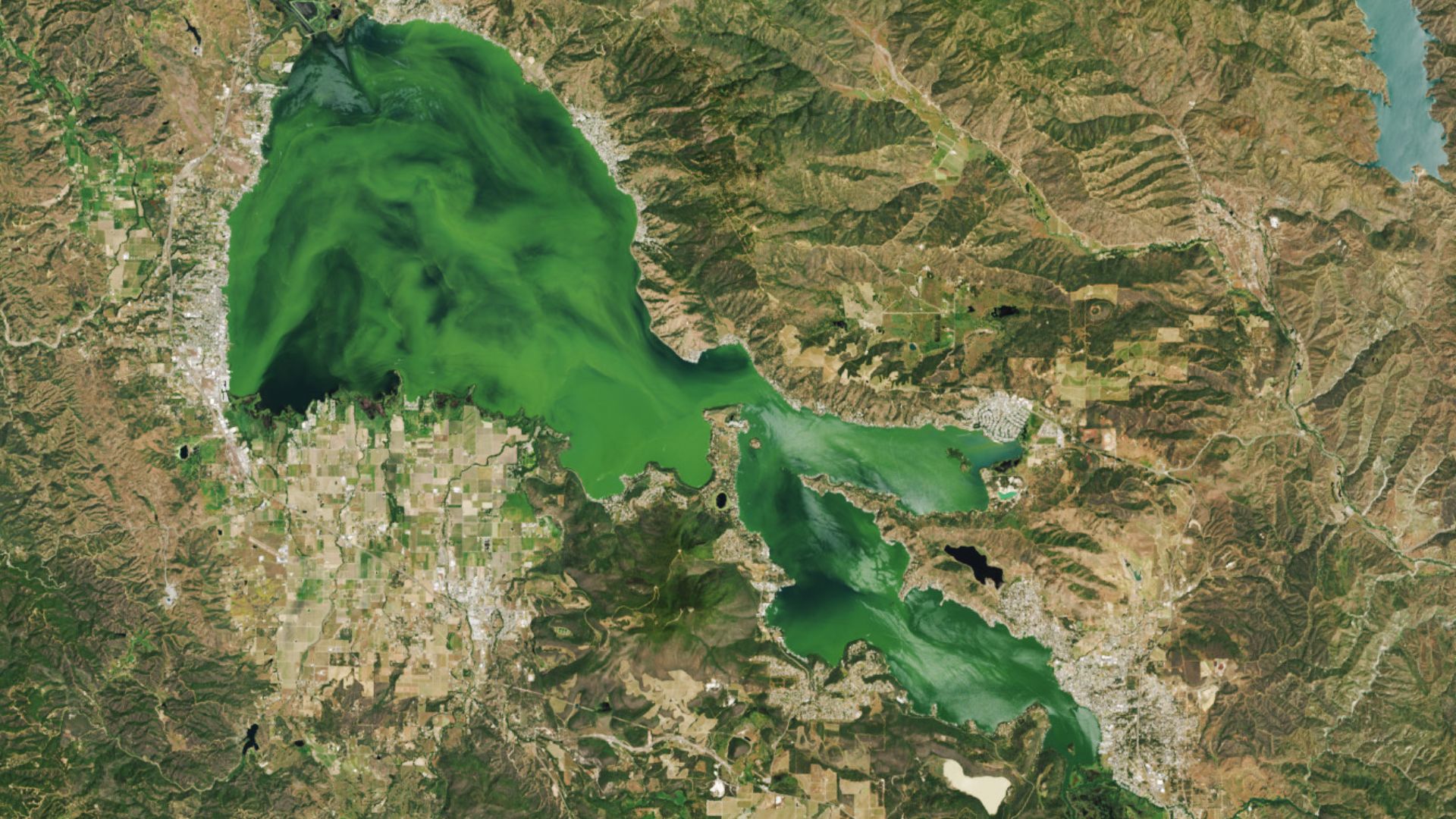
Clear Lake Clouded by Algae – Image Credit: NASA
The Celtic Sea’s Colorful Warning
Recent satellite imagery from NASA’s Earth Observatory shows expansive blooms in the Celtic Sea, characterized by vivid greens and blues that stretch across hundreds of kilometers. This seasonal phenomenon is fueled by the warmer temperatures and increased sunlight of spring, promoting the growth of various phytoplankton species.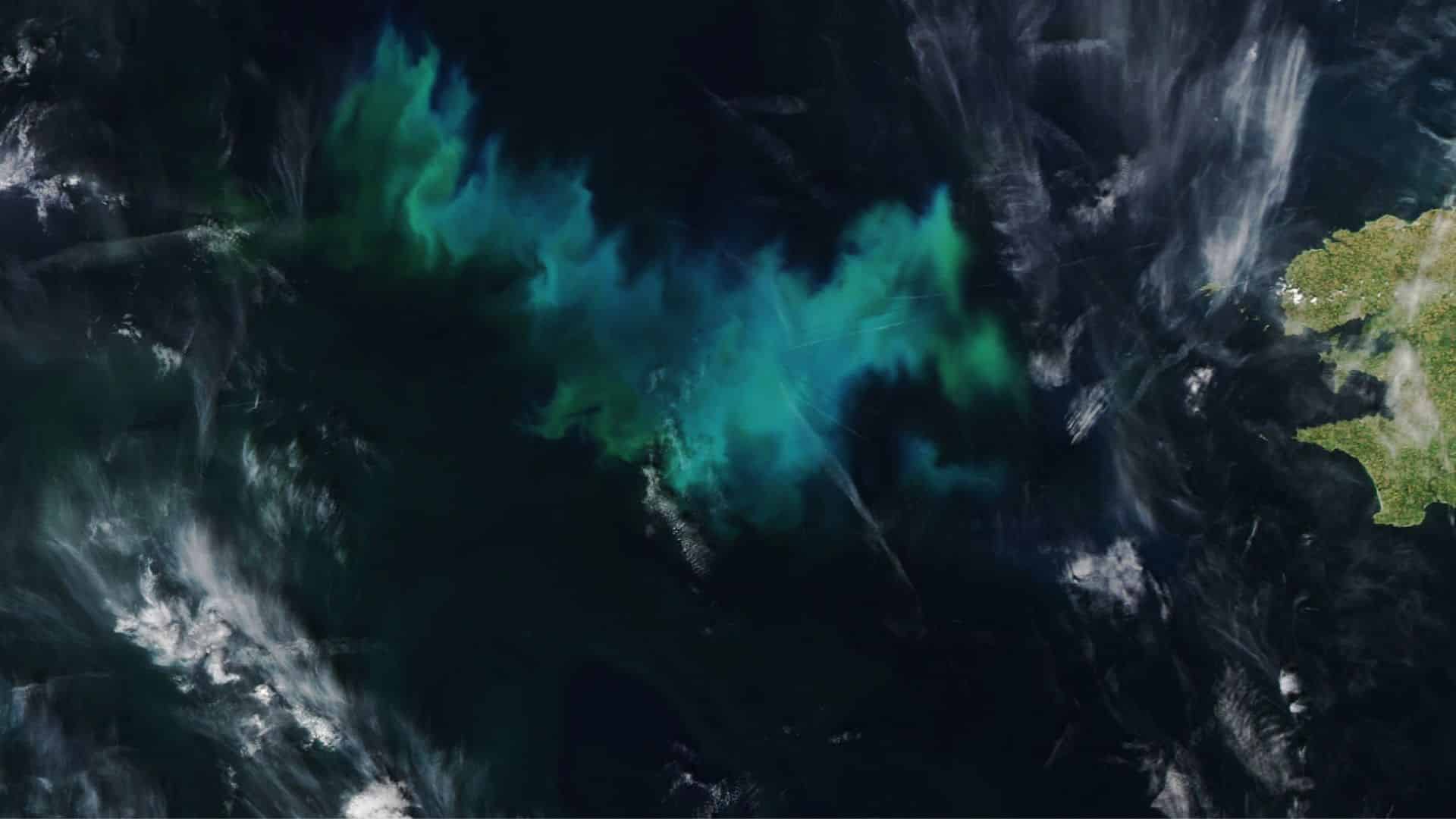
Colorful Celtic Sea – Image Credit: NASA
Baltic Dead Zone: An Ethereal Vortex
Perhaps the most dramatic is the massive algal bloom in the Baltic Sea, visible from space as an ethereal vortex. This phenomenon results in a dead zone, where the oxygen levels are too low to support most marine life, due to the decomposition of algae that depletes the oxygen.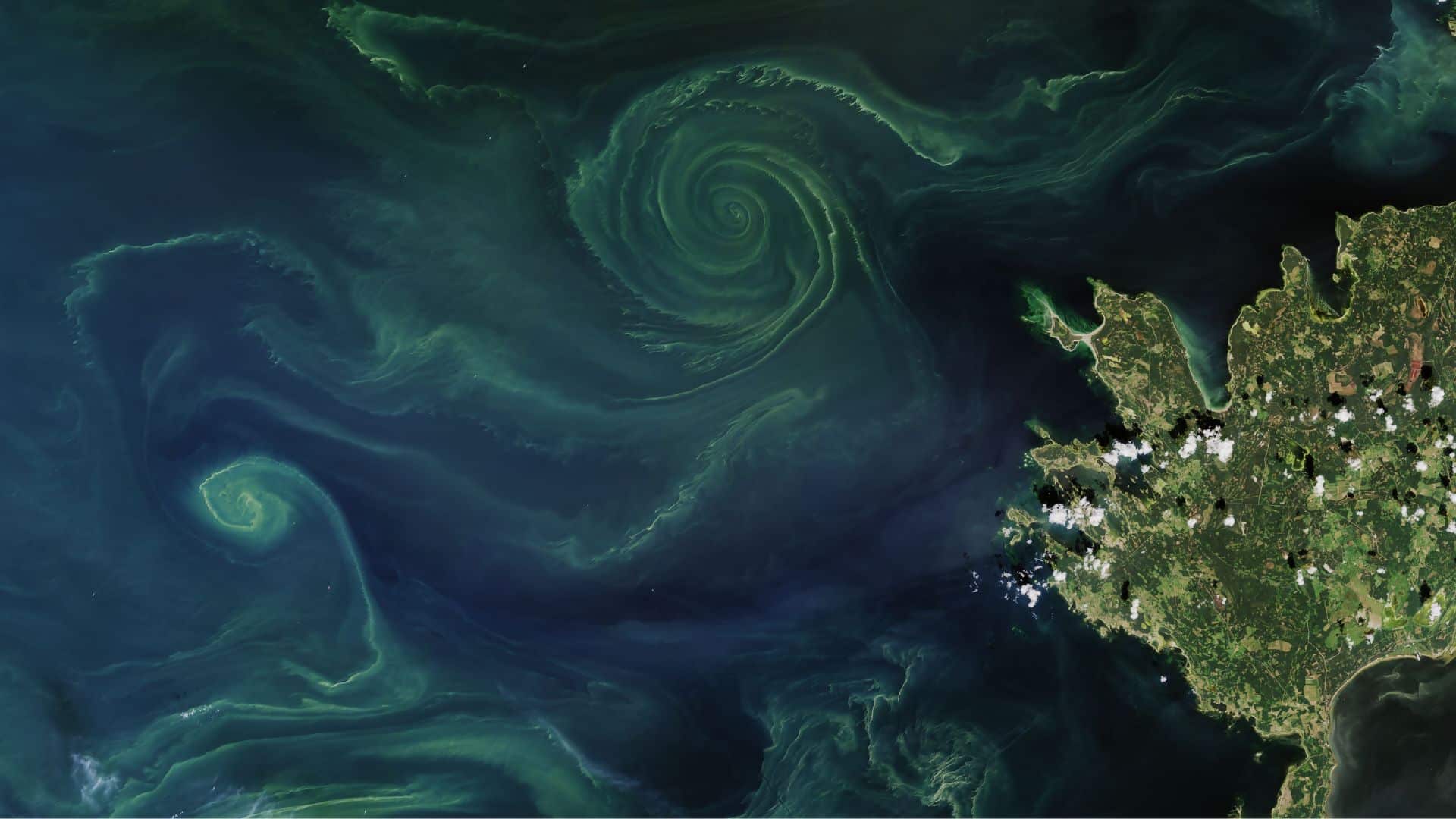
Summer Blooms in the Baltic Sea – Image Credit: NASA
Seasonal Spectacle: Phytoplankton Blooms in the Barents Sea
The Barents Sea, north of Norway and Russia, is colored blue and green almost every year during the spring and summer. This vibrant display results from the accumulation of phytoplankton on the surface, and when the skies are clear, these blooms are visible in satellite images.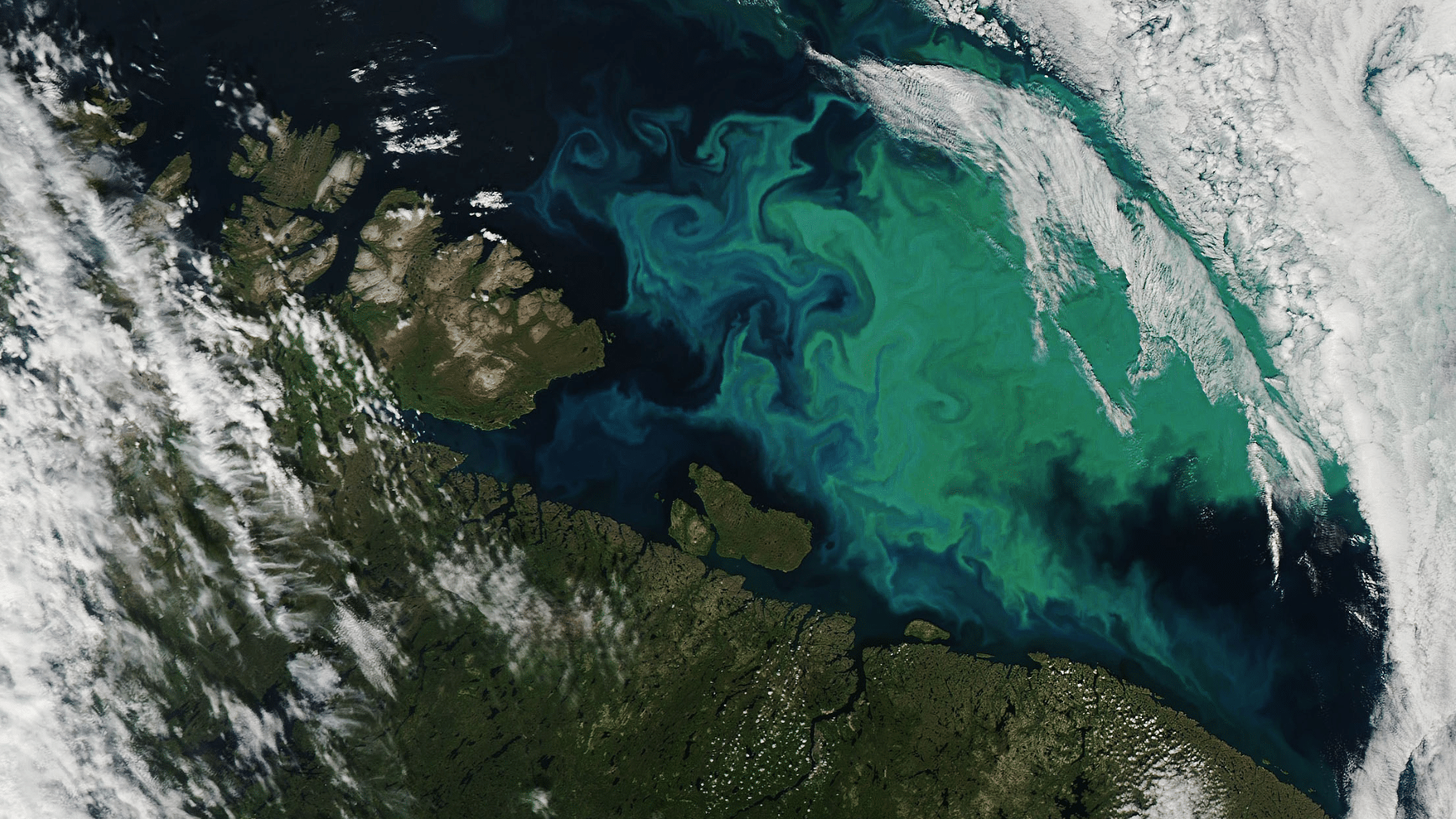
Blue and Green Blooms in the Barents Sea – Image Credit: NASA
LG Sonic’s innovative combination of satellite imagery and ultrasonic technology successfully tackles the widespread problem of algal blooms. Our ultrasound specifically targets algae and breaks down their cells, causing them to decompose naturally, without harming the environment.
Our advanced systems not only detect the early warning signs of algal proliferation but also enable targeted treatment precisely where it’s needed most. Learn more about our sustainable, eco-friendly surface water management technology and join us in protecting and restoring the health of our waters.

